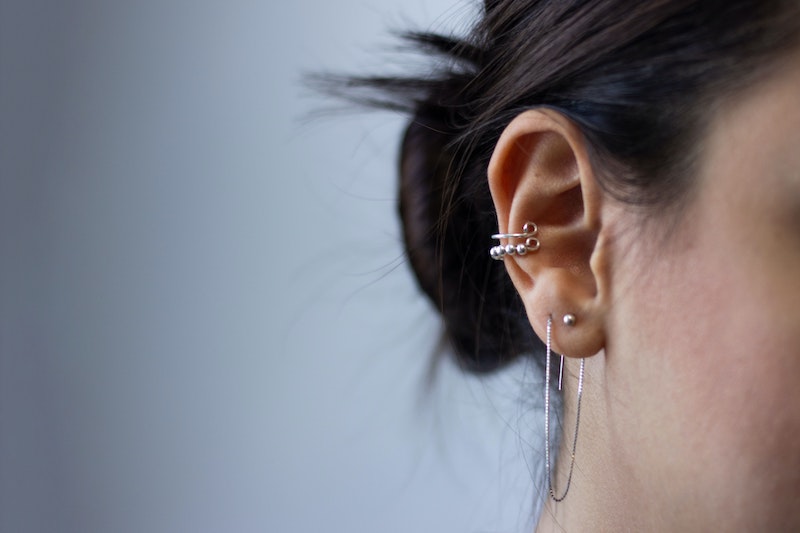
Fix your Protruding or Malformed Ears with an Ear Correction or Otoplasty
Don’t suffer from sticking out ears
Overview of an Ear Correction (otopexy)
| Indications for Surgery | Protruding ears, other malformations |
| Treatment Period | 1 – 2.5 hours (both ears) |
| Anaesthetic | Local anaesthetic, or also general anaesthesia on request |
| Patient Stay | No: Out-patient operation |
| Inactive Period | 1 week (inability to socialize and work) |
| Costs | € 1500 – € 3000 (reimbursement of costs in case of accident / tumour) |
| Post-Treatment | Head bandage – 5 follow-up checks within 12 weeks |
| Sport | After two weeks |
Protruding Ears are Immediately Noticeable
The ears are meant to capture sound waves and thereby redirect them to the hearing mechanism which is so important.
As long as everything works properly, there are no worries.
People whose ears are not the proper shape and size or malformed keep coming to our practice with a request for correction or Otoplasty.
This makes it possible to avoid psychological trauma. Parents bring their children to us already at preschool age in order to have this blemish corrected. This is possible because the ears have largely attained their final shape and size already at this young age.
Aim of the Treatment of an Ear Correction
Treatment is aimed at achieving ears which have the correct size and proportion, as well as the correct position in relation to the head.
Ear Correction for Adults
Adults also contemplate this kind of surgery: Because the ears were left uncorrected at a young age, or because they became altered, for example, in the region of the earlobes due to wearing of earrings.
Ear Correction for Infants
In the case of infants, an attempt can be made to correct this malformation by compressing the ears against the skull. The infant must then wear a fixed bandeau for a period of several months. This no longer works from the sixth month of life onward, on attainment of toddler age.
What are the Most Common Ear Deformities
Ear deformities are congenital, occasionally they are – especially in adults – the result of an accident or occur after removal of a tumour.
No matter the cause, they are clearly visible and impair the appearance.
The following congenital deformities are common:
- The auricle can be too wide. The result is that the distance between the ear and the skull is too large.
- The edge of the ear is insufficiently folded, either completely outside or at the transition to the auricle.
- The earlobes protrude
Other malformations: These are cauliflower ears, cup ears and the underdevelopment of the auricle up to the complete absence of the outer ear.
In such malformations, the inner ear may also be disturbed, i.e. there may be hearing loss.
Course of Treatment
Before actual treatment (ear surgery) a detailed conversation is held as regards the possibilities, limitations and course of therapy.
Of course, children come accompanied by their parents, who must agree to the surgical procedure. Surgery and post-treatment are explained.
In the case of protruding ears, the cartilage is weakened in the region free of folds, and shaped by means of inner seams.
All other malformations (see above) are more complex and require several steps of reconstruction.
In accordance with the malformation, the ear is restored, in multiple sessions in the case of complex malformations.
Post-Treatment
Protruding ears:
After the surgical procedure, a headband must be worn round the clock (except when showering) for one week, and in the evening and at night for three more weeks.
The band is meant to intercept the restoring forces of the ear cartilage. In the first week, the patient is not socially presentable. Sports can be commenced carefully about three weeks after the surgical procedure.
Ear reconstruction:
Post-treatment depends a great deal on the respective procedure and must be discussed individually.
Follow-up checks take place in our wellness center located in Germany one day after surgery, then after another 7 days, 14 days, 6 weeks and 12 weeks.
Risks/Complications
Unfortunately there is no such thing as zero risk in the field of surgery. Of course, any ensuing complications or requirements for follow-up procedures despite low risk are absolutely free of charge.
Protruding ears can move back to their old position after correction.
The ear might appear unnatural: “Telephone receiver” deformity.
The ear cartilage might get inflamed: Chondritis.
When is Surgery not Recommended?
This question usually applies to children. They must really want this kind of surgery i.e. they must be able to obtain an insight into the routine and be willing to handle the consequences. If this is not the case, then the operation should not be performed. Of course, the parents must agree with and support the plan.
Serious underlying diseases which threaten surgical success or overall condition must be excluded. To be mentioned here are cancer, severe spasticity and mental retardation.
Reimbursement by Health Insurances
Health insurances covers the costs for children aged up to 16 years. Adults and youths aged over 16 years bear the expenses personally. If an alteration to an ear is the result of an accident or a tumour, statutory as well as private health insurances usually bear the full cost of treatment.
Further Information
The following authors have dealt in detail with this topic:
Protruding ears: H. Weerda, A. Berghaus
Reconstruction: With rib cartilage – R. Siegert, H. Weerda, R.C. Tanzer. With polyethylene: A. Berghaus
